INTRODUCING
RDA
A GUIDE TO THE BASICS
CHRIS OLIVER
AMERICAN LIBRARY ASSOCIATION
Chicago 2010
Chris Oliver supervises cataloging at the McGill University Library. She is a member of the Canadian Library Association and has chaired the Canadian Committee on Cataloguing.
2010 by the American Library Association. Any claim of copyright is subject to applicable limitations and exceptions, such as rights of fair use and library copying pursuant to Sections 107 and 108 of the U.S. Copyright Act. No copyright is claimed in content that is in the public domain, such as works of the U.S. government.
Printed in the United States of America
14 13 12 11 10 5 4 3 2 1
While extensive effort has gone into ensuring the reliability of the information in this book, the publisher makes no warranty, express or implied, with respect to the material contained herein.
ISBN: 978-0-8389-3594-1
Library of Congress Cataloging-in-Publication Data
Oliver, Christine Tomaszuk.
Introducing RDA: a guide to the basics / Chris Oliver.
p. cm.
Includes bibliographical references and index.
ISBN 978-0-8389-3594-1 (alk. paper)
1. Resource description & access. 2. Descriptive catalogingStandards. I. Title.
Z694.15.R47O45 2010
025.32dc22
2010021719
Series cover design by Casey Bayer. Series text design in Palatino Linotype and Avenir by Karen Sheets de Gracia. Composition by Dianne M. Rooney.
 This paper meets the requirements of ANSI/NISO Z39.48-1992 (Permanence of Paper).
This paper meets the requirements of ANSI/NISO Z39.48-1992 (Permanence of Paper).
ALA Editions also publishes its books in a variety of electronic formats. For more information, visit the ALA Store at www.alastore.ala.org and select eEditions.
CONTENTS
ACKNOWLEDGMENTS
I would like to acknowledge those who generously offered advice and comments. With much appreciation, thank you to Tom Delsey, Dr. Barbara Tillett, Margaret Stewart, Pat Riva, Nanette Naught, Mary Curran, Marc Richard, and Nevenka Koscevic.
ALA Editions purchases fund advocacy, awareness,
and accreditation programs for library professionals worldwide.
ABBREVIATIONS
CoP | Committee of Principals |
AACR | Anglo-American Cataloguing Rules |
AACR2 | Anglo-American Cataloguing Rules, 2nd edition |
FRAD | Functional Requirements for Authority Data |
FRSAD | Functional Requirements for Subject Authority Data |
FRBR | Functional Requirements for Bibliographic Records |
IFLA | International Federation of Library Associations and Institutions |
ISBD | International Standard Bibliographic Description |
JSC | Joint Steering Committee |
MARC 21 | MARC = MAchine Readable Cataloging |
MARC 21 = harmonization of USMARC and CAN/MARC |
MODS | Metadata Object Description Schema |
ONIX | ONline Information eXchange |
RDA | Resource Description and Access |
R DA, Resource Description and Access, is the new cataloging standard that replaces the Anglo-American Cataloguing Rules, 2nd edition (AACR2). Though it has strong links to AACR2, RDA is quite different because it is based on a theoretical framework, it is designed for the digital environment, and it has a broader scope than AACR2.
BASED ON A THEORETICAL FRAMEWORK
Like AACR, RDA consists of a set of practical instructions. However, RDA is based on a theoretical framework that defines the shape, structure, and content of the new standard. The key to understanding RDA is its alignment with the two conceptual models, Functional Requirements for Bibliographic Records (FRBR) and Functional Requirements for Authority Data (FRAD). FRAD is an extension of the FRBR model. The models are a way of understanding the bibliographic universe. They identify the tasks that users need to accomplish during the process of resource discovery and demonstrate how different types of bibliographic and authority data support the successful accomplishment of these tasks. FRBR and FRAD provide a theoretical and logically coherent basis on which to build an improved resource-discovery experience for the user.
The opening words of RDA state the overall purpose and scope as providing a set of guidelines and instructions on formulating data to support resource discovery (0.0). The phrase to support resource discovery conveys a key message about the nature of RDA: this is a standard designed to focus attention on the user and on the tasks that the user carries out in the process of resource discovery. The purpose of recording data is to support the user tasks.
Every instruction in RDA relates back to the user and to the tasks that the user wishes to accomplish. These user tasks have their origin in the FRBR and FRAD models, and are introduced immediately, at the very beginning of RDA (0.0):
Tasks That Use Bibliographic Data | Tasks That Use Authority Data |
find | find |
identify | identify |
select | clarify |
obtain | understand |
RDA takes as its starting point the theoretical framework expressed in the FRBR and FRAD models. This theoretical framework constitutes a new way of thinking about bibliographic and authority data. This change in approach is reflected throughout the standard, in the organization and structure of the instructions and in the content of the instructions.
DESIGNED FOR THE DIGITAL ENVIRONMENT
The changes in the cataloging environment between the 1960s and 2000s have been enormous, not only because of the rapid proliferation of new types of publications, new forms of content, and new carriers for content, but also because the move into a networked online environment has qualitatively changed the way the library and its users go about their work. RDA is a standard designed for the digital environment.
RDAs purpose is to support the production of robust, or well-formed, and can also be mapped to other schema, current or future ones. At first release, RDA data can be encoded, stored, and transmitted using existing technology and databases, as MARC records in traditional library catalogs. However, RDA data is also designed for use in the networked environment of the Web and in new types of database structures. RDA data can be used as the basis for a metadata element set that makes data visible and usable in a Web environment.
RDA can be used for the description of both traditional and nontraditional resources, analog and digital, within and beyond the library. A key feature of RDA is the way it is designed to provide a consistent, flexible, and extensible framework for both the technical and content description of all types of resources and all types of content.and logically consistent approach to the description of content, media, and carrier. This limitation made it difficult to extend AACR2 rules for the description of new types of resources, notably electronic resources. RDA provides an extensible framework for the description of all types of resources.

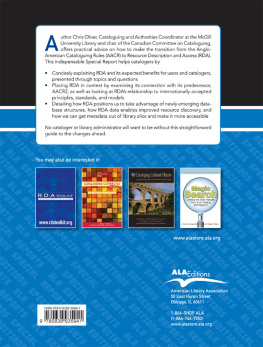
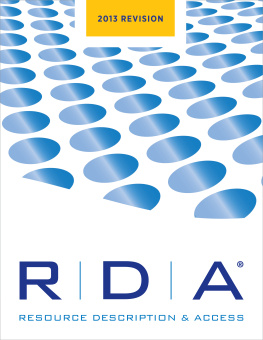
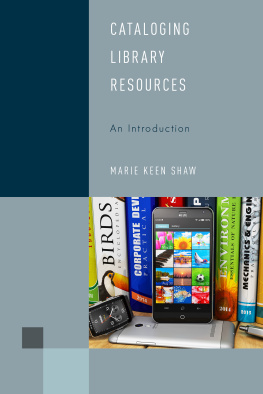

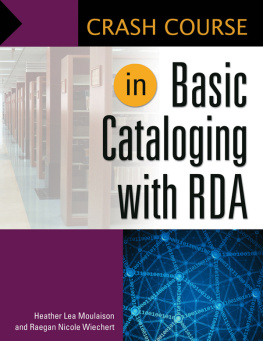
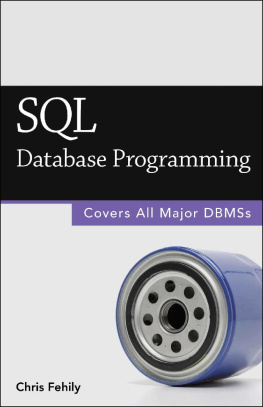



 This paper meets the requirements of ANSI/NISO Z39.48-1992 (Permanence of Paper).
This paper meets the requirements of ANSI/NISO Z39.48-1992 (Permanence of Paper).